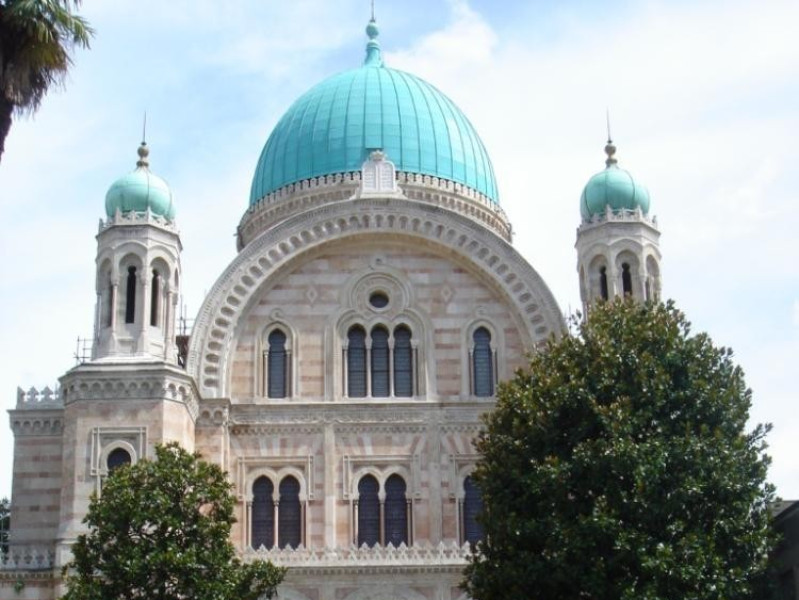Sinagoga e museo di arte e storia ebraica
The Great Synagogue of Florence or Tempio Maggiore is a notable synagogue in Florence, Italy.
The synagogue was built between 1874 and 1882 thanks to a large donation made by David Levi, a member of the local Jewish community. His legacy was to build a synagogue worthy of Florence's beauty. The architects were Mariano Falcini, Professor Vincente Micheli, and Marco Treves, who was Jewish. Their design integrated the architectural traditions of the Islamic and Italian worlds.[1]
Layers of travertine and granite alternate in the masonry, creating a striped effect like that of theSiena Cathedral. Old photographs show bold red and beige stripes, but the bold colors of the stone have faded over time, leaving a more mottled effect.[1]
The overall form of the synagogue is the cruciform plan of Hagia Sophia emulated by so many mosques. The corner towers are topped with horseshoe-arched towers themselves topped with onion domes in the Moorish Revival style. Three horseshoe arches form the main entrance, above which rise tiers of ajimez windows, with their paired horseshoe arches sharing a single column.[1] The natural copper roof was oxidized to green so that it would stand out in the Florentine skyline.
Inside the building "every square inch is covered with colored designs," in Moorish patterns. The interior mosaics and frescoes are by Giovanni Panti. Giacomo del Medico designed the great arch.
During World War II Fascist soldiers used the synagogue as a vehicle garage. In August 1944 retreating German troops worked with Italian Fascists to lay explosives to destroy the synagogue. However, Italian resistance fighters managed to defuse most of the explosives and only a limited amount of damage was done. What damage was done was restored after the war. The synagogue was restored yet again after damage from the flood of the River Arno in 1966.

